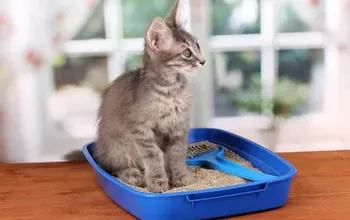
Which Cat Litter Is Best For Your Cat?
There are many types of kitty litter available on the market. Knowing the types of cat litter available will help you pick the right one for you and your cat.
The dust that accumulates on your kitty’s fur and paws will inevitably be ingested when he grooms himself. Due to this, many pet parents are concerned about the safety of the litter they use, and they want to provide their kitties with the best, and purest, litter options. Others worry about the cost of the cat litter they’ll purchase or the product’s eco-friendliness. There are a variety of manufacturers producing different kinds of cat litter to address these consumer concerns and demands.
Litter made of clay
The most popular and well-known type of kitty litter is clay litter, either in clumping or non-clumping form. The clumping variety is known for its ability to absorb urine very well.
Here are 5 big differences between cats and dogs
There is quite a bit of controversy surrounding clay litter, despite its popularity. It is loved by many pet parents, but avoided by others. Because clay is strip mined, it has a detrimental effect on the environment. Due to its non-biodegradability, it accumulates in landfills. The reasons above are good enough for pet parents who are trying to live a greener lifestyle to switch to a more natural, biodegradable litter.
Clay-based litters are also associated with some health concerns, both for people and their cats. Some individuals worry that inhaling the dust may be harmful. A cat may experience health problems after ingesting clumping clay litter that can form a mass in the digestive tract when it comes into contact with liquids, since sodium bentonite expands when it comes into contact with liquids. There are many cat owners who use clay litter without any problems, but if you’re concerned about possible adverse health effects, consider using a different type of litter.
Create a cat-friendly home
Litter made from plants and newspapers
In response to growing concerns about cat health and the environment, litter manufacturers have released plant-based options, as well as recycled newspaper litter. You may need to try out several different brands before finding the one that works best for you, as plant-based options are usually made from pine, cedar, corn, walnuts, and wheat. Furthermore, these litters are biodegradable, so they aren’t as harmful to the environment as clay litters.
Litter made of silica
Silica cat litter, also known as crystal litter, is another modern option. Silica gel is highly absorbent and controls odors, making it a good alternative to clay litter. Additionally, this type of litter may produce less dust. Pet parents are just as concerned about ingestion of silica as they are about clay.
There are three types of litter: clumping, non-clumping, and pellets
Most people prefer clumping litter over non-clumping varieties, but again, this depends on your preferences as well as your cat’s. Cats need non-clumping litter while kittens are young, but once they’re old enough, you can switch to clumping litter from a variety of natural varieties or traditional clay options. It is also possible to use natural pellet litters, which breakdown when moisture comes into contact with them, but produce hardly any dust and can also reduce tracking.
Give your cat some time to adjust if you decide to change the litter you are using. You should gradually introduce the new litter into the old litter rather than switching abruptly, so that your cat becomes accustomed to it without becoming stressed.





